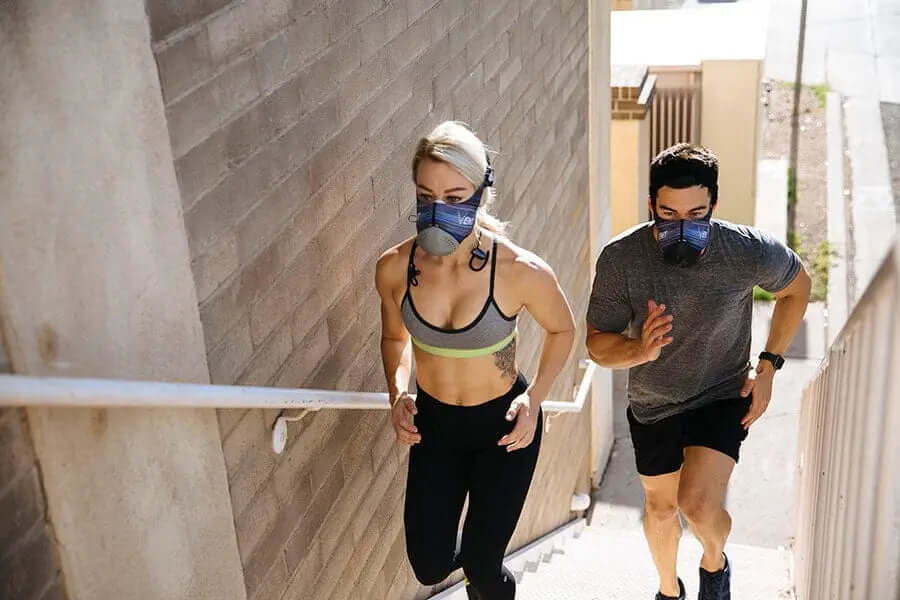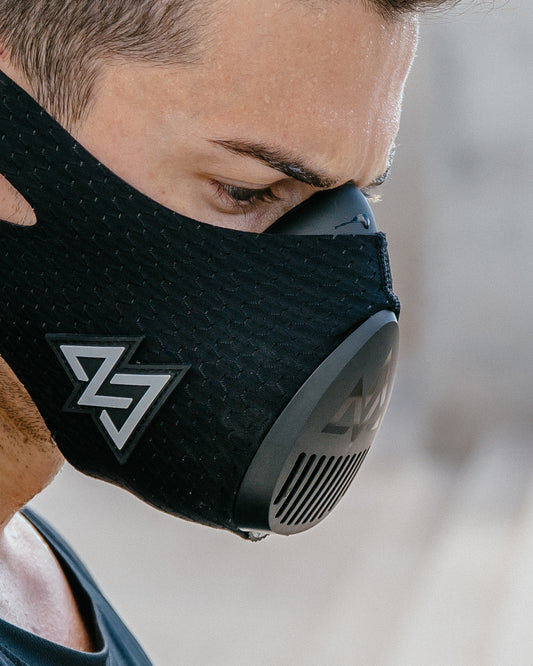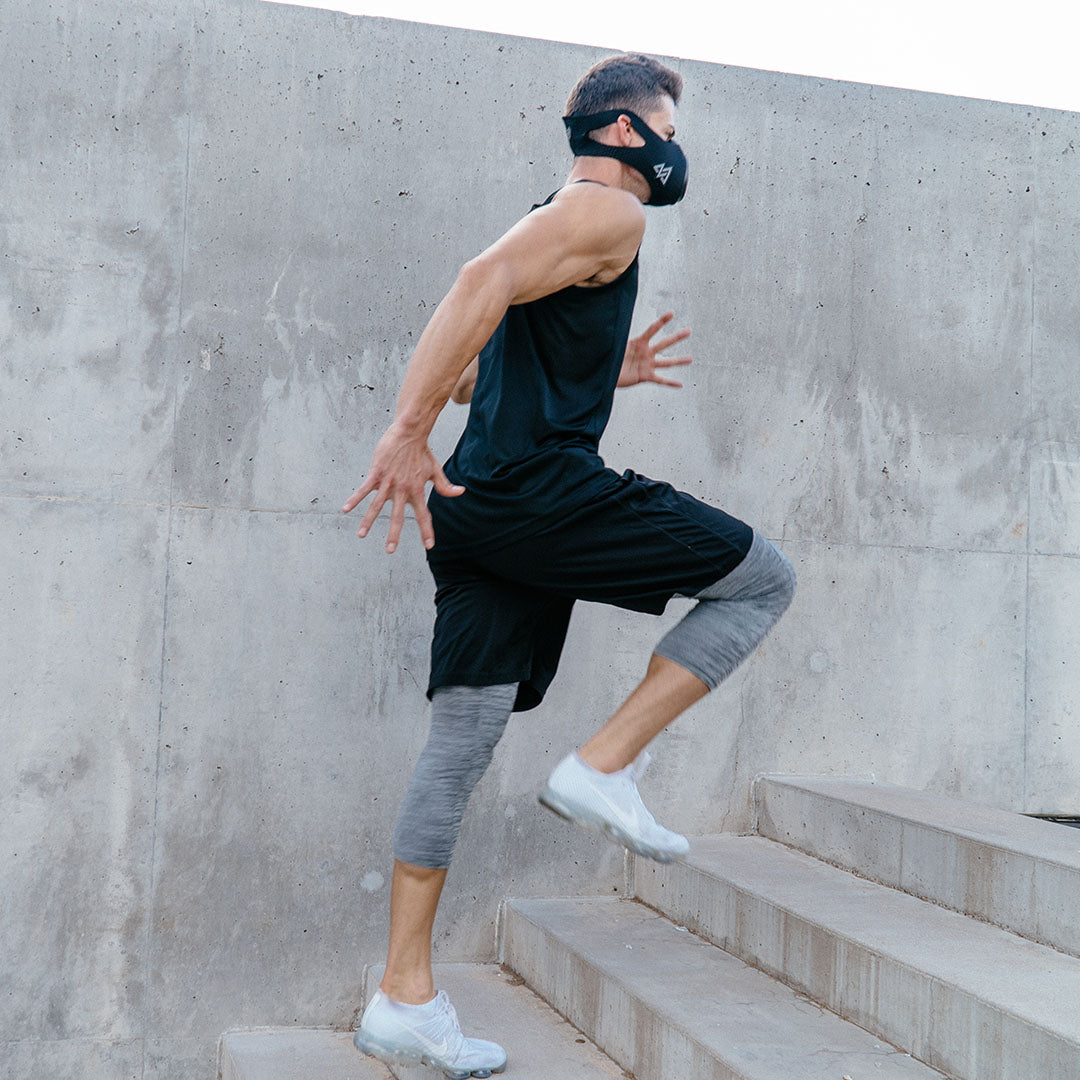Using Co2 Tolerance to Improve Exercise Capacity
Training Mask Research and Development
Co2 Tolerance Explained
The usage of the term Co2 tolerance is somewhat foreign to the exercise world. It is more common place in the arena of free diving where holding the breath is of importance. But training for Co2 tolerance has a place in fitness just as it currently does in diving. Co2 tolerance is at the heart of yoga breathing principles as well. Most of us who think of diaphragmatic yoga breathing think that it encourages deep breathing. Although this is partially true, the real power of yoga breathing comes to bear in how you build up your Co2 tolerance and slow your respiration. Accumulation of Co2 and hydrogen ions in the body are the chief factor in your fatigue tolerance. Little can be done in terms of increasing your tolerance to hydrogen ions, but something can be done to increase your tolerance to Co2. Ironically, Co2 plays an important role in your blood in terms of buffering hydrogen ion production and lactic acid. The problem arises when the respiratory center in your brain has a low Co2 set point.
A low Co2 set point will stimulate you to over breath during exertion. Over breathing for the amount of exertion you are performing solves one issue of getting you extra oxygen, but it also causes you to over release Co2. This over release of Co2 during exertion accelerates acidosis and makes it exceedingly difficult to maintain intensity levels. Moreover, the respiratory center of the brain in the presence of what it perceives as elevated Co2, sends strong signals to diaphragm and intercostals to contract more forcefully. Unfortunately, the energy output of the diaphragm and intercostals is finite, and spending it too soon during a workout can equate to poor endurance in addition to cramping of the secondary muscles of breathing (i.e. side cramps). One of our goals should be to naturally increase our bodies tolerance to Co2 during exercise without overstimulating the respiratory center. If we overdo Co2 tolerance, we will trigger our poor habit of hyperventilation and thwart our progress towards our main goal. In other words, holding your breath while you’re working out to over induce a state of elevated Co2 will set off your bodies breathing alarm and give you the sensation of breathlessness. However, if Co2 tolerance is utilized judiciously, we can circumvent the bodies alarm system and move towards more productive breathing cycles while we exercise.
A higher Co2 tolerance will equate to a more regulated breathing pattern while under duress. It will allow us to preserve the power output of our breathing musculature for longer periods. Improved Co2 tolerance will also allow us to regulate our breathing so that our bodies have more Co2 available during exertion to buffer elevated acid levels. One of the greatest benefits of improved Co2 tolerance is the reduction of breathlessness while we train. It opens the door for us to train harder and longer without that sense that we have to stop to get a breath. The Training Mask is an outstanding tool in our arsenal to improve our Co2 tolerance. The mask offers us a means of breathing normally while we train while at the same time causing us to re-breathe more Co2 than we normally would if we were not wearing the mask. Moreover, the mask facilitates deeper and slower breathing cycles so that even if we want to fall back on our habits of hyperventilating/shallow breathing we cannot. We are going to go over a couple of different ways in which you can use the high altitude elevation mask to improve Co2 tolerance below.
The Workouts
Session #1: Anaroebic Interval Training (Recovery Focus)
This workout is going to be a series of high intensity intervals that last 30-60 seconds followed by 30 seconds of complete standing rest. You will not wear the mask during your work set but rather during the rest period in between work sets. You should choose an elevation resistance setting that is low to moderate for the rest sets (3k to 9k depending on your tolerance). The work sets themselves should consist of standing full body movements to induce hyperventilation. Once you are in a state of hyper ventilation during the work set, we are going to don the mask during the rest period to regulate our breathing while maintaining an elevated Co2 level in the blood. You should work towards regulated breathing during the rest periods with an exhalation that is long and even with an inhalation that is strong as well as deep.
Sample:
Activity: Hill Runs at 85-95% of max PE (Perceived Exertion)
Repetitions: As many climbs as possible in the 60 second time frame.
Sets: 10 sets
Recovery Period: Don the mask and perform 10 breaths at a cadence of 3 seconds of inhalation with 7 seconds of exhalation. Choose a low to moderate mask setting for the first couple of workouts. We advise sticking to 3k until you can perform all ten of your recovery breaths during each set of your workouts in a non-labored manner.
Session #2: Standard Interval Cardio Workout (Work Set Focus)
Sample:
Activity: A brisk jog at 75-85% of your max heart rate with the mask donned at a moderate elevation resistance such as 6k for 3-5 minutes.
Repetitions/Sets: 5 work sets of 3-5 minutes followed by 4 sets of recovery.
Recovery Period: Take the mask off during your rest periods and focus on a breathing cadence of 3 seconds in and 7 seconds out. Breathing rhythm and depth are of paramount importance. Once you conclude your rest period, reapply the mask and start your next work set.
The good news is that Co2 tolerance training with the Training Mask need not be a complicated affair. Just by wearing the mask during your workouts you increase your bodies safe exposure to Co2 while you train naturally throughout the course of your workout. In order to maximize the benefit from your Co2 tolerance training it is important to use the cycling method of mask usage we presented above. This allows you to preserve intensity levels while progressively improving your Co2 tolerance over time. Thank you for reading this instalment of the Training Mask review. Feel free to post comments on this article and these small sample workouts on our Facebook page, and the Training Mask review message board once its available. Read more: Training Mask to Supercharge Calorie Burn in and After Your Workouts
All Copyrights belong to TRAININGMASK.LLC (R) - Do not copy or duplicate








